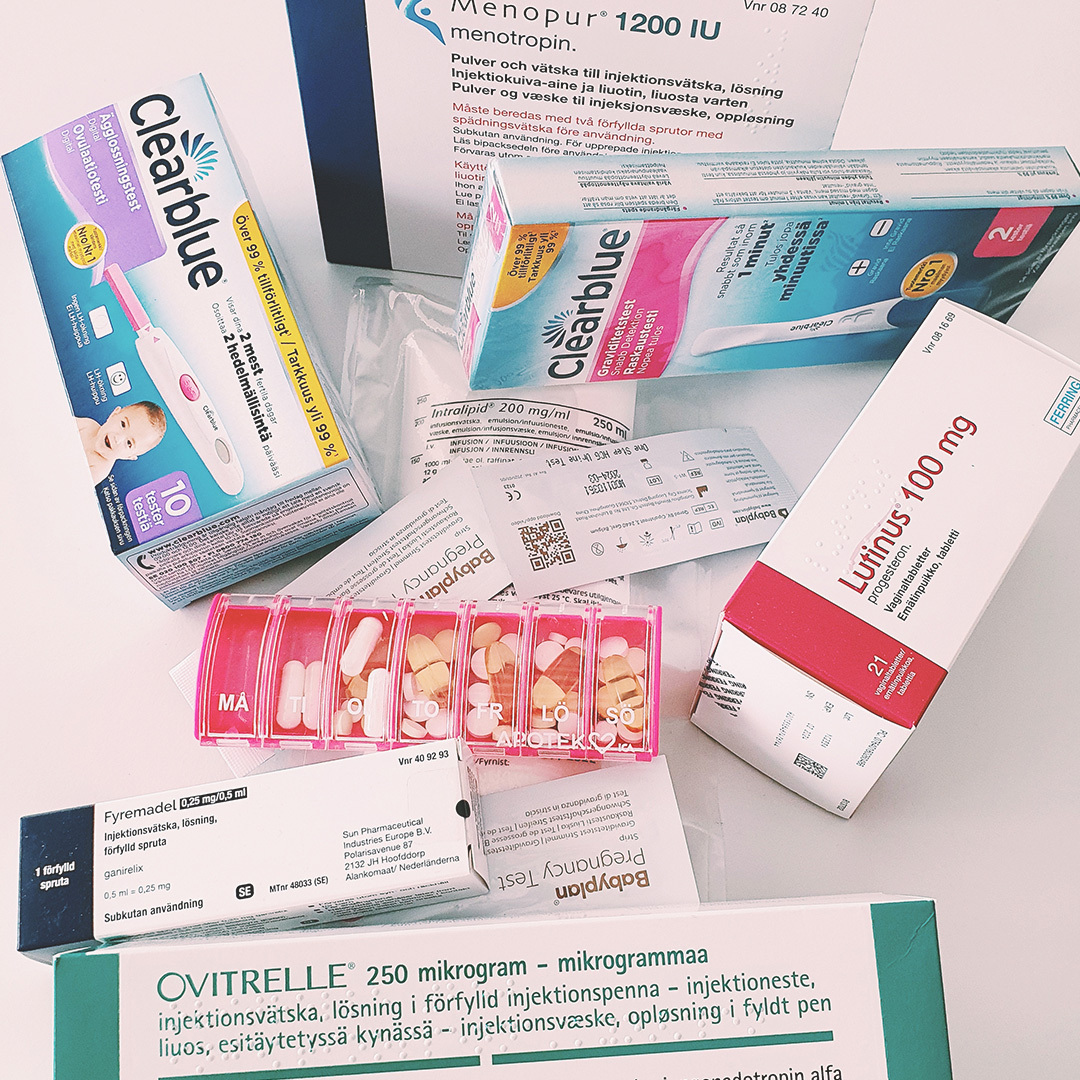Primary ovarian insufficiency (POI)
The diagnosis primary ovarian insufficiency (POI) means that a woman has lost her ovarian reserve of oocytes at a younger age than normal. By definition the woman is below 40 years of age and has had no menstruations for 4 months, as well as she has high FSH levels indicating menopause (these levels should be confirmed at two times with more than 4 weeks in between). The POI can be divided into iatrogenic POI (iatrogenic means that the conditions could have been developed by medical treatment or surgery), and spontaneous POI, with often genetic, autoimmune, or of unknown causes. A woman with POI may still have a low number of oocytes left and after the first cessation of regular menstruations (which is a sign of absence of ovulations), menstruations and ovulations may come back during one or a few months during the initial 1-2 years after menstruation stop.
Etiology
The two main causes of POI are iatrogenic POI (chemotherapy, radiation, surgery of ovaries etc, and spontaneous POI (genetic, autoimmune, infectious causes). Of note, in more than half of cases with POI the underlying cause is not known. Smoking during many years increases the risk of POI 1.9-fold. Concerning genetic causes, it is known that around 30% of women with POI have a close relative with POI. A mutation in the gene FMR1 (Fragile X Mental Retardation 1 Gene) increases the risk of POI 5-fold is.
There are about 100 other gene-mutations known with weaker association to POI and many of the genes they are affecting are related to DNA repair mechanisms. The ovarian mechanisms behind POI of genetic origin are thought to be that the thousands of sleeping oocytes in the small primordial follicles cannot keep their DNA intact when they are in an arrested division (meiosis). Thus, lack of effective DNA-repair mechanisms causes the woman to start with much fewer oocytes at puberty or that the oocytes will be lost at a much higher rate than normal.
POI of iatrogenic origin is caused by direct damage to the primordial follicles.
Autoimmune oophoritis causing POI is seen in several autoimmune diseases such as Addison's disease (adrenal insufficiency), autoimmune polyglandular syndrome type 1 (APS1), myasthenia gravis, systemic lupus erythematosus (SLE), and rheumatoid arthritis (RA). Dysregulation of the thyroid (hypo- or hyper-thyroidism) is more common among women with POI (20%) versus the normal population (5%). It is believed that the auto-antibodies will by binding to ovarian cells destroy the pool of primordial follicles.
Infectious causes of POI are tuberculosis and cytomegalovirus (CMV) and these agents will cause necrosis of parts of the ovaries.
How common is POI?
POI is seen in 1-3% of women below 40 years of age. Menopause after 40 years is regarded as in the normal interval, although the average age of menopause (defined as one year after the last menstrual period) in Sweden is 51.7 years.
How do you diagnose POI?
The patient usually seeks the gynecologist because she has had no spontaneous menstruations for some months. The gynecologist will by a transvaginal ultrasound examination see that the ovaries are unusually small and that they do not contain any, or only occasional, visible follicles (antral follicles). Blood tests will reveal that the levels of the pituitary hormone FSH (follicle stimulating hormone) is high, and of the ovarian hormones estradiol anti-müllerian hormone (AMH) are low.
How should POI be treated?
If a woman seeks for infertility soon after the onset of POI it may be possible to stimulate the ovaries by gonadotropins to retrieve oocytes for IVF. Also, spontaneous ovulatory cycles may occur and there will be a window for normal conception. If these approaches are not successful, use of donor oocytes in IVF is an option with high success rate.
When the woman is with no immediate fertility wish she should be substituted with exogenous estrogens and in stable or cyclic combination with progestogens. This in order to keep normal estrogen levels to avoid vaginal dryness, hot flushes and bone density loss. The hormonal treatment should continue until the average age of menopause.
There is no treatment to reverse POI although research is ongoing on use of bone marrow stem cells and platelet-enriched plasma attempting to temporarily rejuvenate the ovary. These are not clinical treatments today and can only be performed within clinical research trials.

Article by
Mats Brännström
MD, PhD, Professor – Senior Consultant in Obstetrics and Gynecology
Other Articles

Samantha's Story
I knew from the start that it was hard to conceive a child of our own with my partner. As a child he... Read article

Male factor infertility
The definition of male factor infertility is when the cause of infertility within a couple is becaus... Read article

Endometriosis
The European Society of Human Reproduction and Embryology (ESHRE) has recently released an updated g... Read article
.jpg?alt=media&token=912e3772-6724-4c20-a29e-201478dda308)
Intrauterine Insemination
Intrauterine insemination (IUI), also called artificial insemination (AI), is a type of fertility tr... Read article

Jessica Olers's Story
Sometimes it doesn't turn out as planned. Ever since I was little, I have dreamed of a big family wi... Read article

Jessica’s Story
I have been pregnant three times. Or actually while writing this story, I am pregnant. But I don't f... Read article

Klara’s Story
Our infertility journey started two years ago. The process has not at all been what we expected and ... Read article
.jpg?alt=media&token=fc32a2e6-a127-4170-b5fb-b9338770ed1a)
The effects of Vitamin D on fertility
Vitamin D is a vitamin synthesized in the skin through sun exposure (UVB radiation). Moreover, vitam... Read article

Veronica’s Story
To make babies. Nowadays that phrase has a completely different meaning.In february 2019 we decided ... Read article

Tova’s Story
This is #mybumpystory - an emotional rollercoaster with repeated miscarriages and hopefully soon a b... Read article